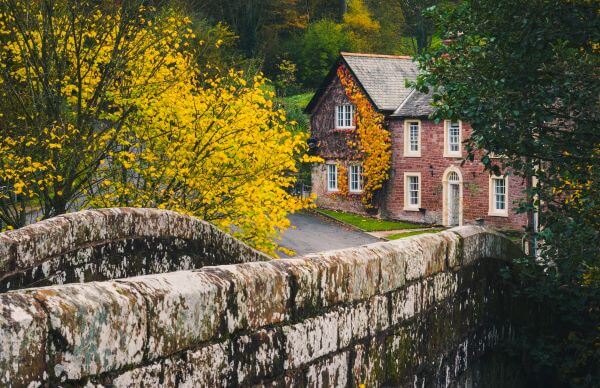Rural properties in the UK: what are the insurance risks?

The British countryside is famous for its chocolate box villages, grand estates, quaint farmhouses, and ancient buildings; but being the custodian of these properties brings a range of insurance challenges.
Their beauty often comes with historical and architectural importance, and many in England and Wales have been ‘listed’ (Grade I, Grade II* & Grade II), with significant planning restrictions imposed.
It is a similar in Scotland where the grades are A, B and C (S), and in Northern Ireland where they are A, B+ and B2.
These types of property can also quickly fall into disrepair, especially if a backlog of maintenance issues develop over time.
They can then be more expensive to repair and rebuild – and provide extra complications around the adequacy of sums insured if some of the features or contents are of historical interest and difficult to replace.
Older construction techniques and raw materials mean historic or listed buildings are more vulnerable to the elements, too.
A report by the Met Office shows that the UK’s climate is becoming wetter, with more extreme rain days over the past decade than in the 1960s and 70s.
Statistics from 2021 show temperatures in the UK didn’t reach the record-breaking figures of 2020, but it still ranked amongst the top-20 warmest years on record.
NASA reported in January 2022 that the last eight years have been the hottest on record globally, with 2021 ranking sixth. In fact, the planet warmed by 1.1 degrees Centigrade above the average from the start of the industrial revolution.
Fire is a perennial problem, too. According to emergency specialists Ideal Response, in 2019 alone, 47 Grade II listed buildings in England required assistance from a fire and rescue service. The causes for these fires were varied, from chimney fires and electrical faults to deliberate attacks. Vacant buildings can also be vulnerable to vandalism, theft and arson.
The right policy
It makes sense, therefore, that where there are unique criteria and special considerations, insurance policies should accommodate them. The one-size-fits-all approach that works for modern builds of brick and tile construction just won’t cut it.
But it can be a bit of minefield and choosing cover can throw up all sorts of questions. For example, when making repairs will you be asked to follow today’s building regulations and incorporate modern measures like insulation and alarms? These kinds of questions obviously have significant implications for insurance.
Listed buildings also often bring with them heftier price tags on building materials and professional costs. They often suffer from age-related structural problems, are more expensive to repair and rebuild, and have tighter planning restrictions.
Other issues to think about might include whether the property is privately occupied or open to the public. Or whether there are well-maintained open fires in regular use, and battery operated or hardwired fire and smoke alarms.
Owners of farms with old, historic and listed rural properties should consider talking to an insurance broker with expertise in this specific sector. It is only by doing so that they can be sure they have the correct cover for their property.
Ultimately, approaching a qualified advisor will save you money, stress and headaches further down the road. There is a myriad of insurance products on the market and attempting to go it alone can be overwhelming.
Living or working in an older building can be extremely rewarding, but it is important to think about the additional considerations when it comes to choosing the right insurance.
Get in touch
To speak to a member of our specialist team call 01234 230295. Or email bedford.rural@aplan.co.uk.







